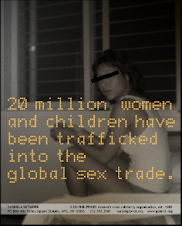Sex tourism is an industry where first world travelers (usually men) take advantage of sex workers (usually women and girls or transwomen) in exotic locations in the developing world. Researchers are uncertain where and when the sex tourism industry first started, but there are speculations as to why sex tourism became (and is becoming) so popular.
Although prostitution has existed for thousands of years, tourism for the purpose of finding sex is a relatively new phenomenon. Because prostitution is popular around US military bases overseas, some researchers suggest that sex tourism started around World War II. Others claim that it picked up during the US wars in Korea and Viet Nam. Although researchers do not agree on when sex tourism started, many do accept that "The countries that have been developed as the destinations for sex tourists include those which have served as 'rest and recreation' sites for the American military: Thailand, South Korea, the Philippines" (Enloe, 36). Today most sex tourism is centered in Latin America and the Caribbean and Southeast Asia.
The International Labour Organization suggests that the global sex industry in Southeast Asia saw a drastic increase in the mid 1980s. This may have been due to economic hardship and the increased demand for women and girls to work in order to support their families.
In the Caribbean many of the brothels date back to the slave trade (Kempadoo, 5). Slave traders frequented brothels while bringing boats of African slaves to the Caribbean and Americas. In the 1970s these brothels became popular for American and European tourists. Interestingly, much of the popularity of sex tourism in Barbados came from white women searching for exotic men as companions (Kempadoo, 13).
Sex tourism has been globalized in two main ways. As travel became increasingly accessible and affordable sex work thrived. Clients are able to cross borders to experience so-called exotic sex workers. Sex tourism has also become globalized by the trafficking of prostitutes. In Southeast Asia women and girls are often trafficked because "Importing women helps meet the rising demand for fresh prostitutes" (Bales, 53).
What may be most interesting in the history of sex tourism is its present appeal and growth. Although local and global feminist organizations have begun to combat the exploitation of women and girls the sex industry continues to grow rather than diminish. Researchers understand that economic depression and conditions in the countries that are popular for sex tourism greatly influence the influx of women and girls working in the sex industry. What they might focus on instead are the developed societies that foster the types of masculinities that allow and encourage the conquest and objectification of women’s bodies. Research of this nature may point towards new ways to combat sex tourism by removing demand for such a market.
Click HERE to open the feedback tool.
__________________
Bales, Kevin. "Disposable People: New Slavery in the Global Economy." Berkeley: University of California Press, 2004.
Enloe, Cynthia. "Bananas, Beaches and Bases." Berkeley: University of California Press, 1989.
Kempadoo, Kamala. "Sun, Sex, and Gold: Tourism and Sex Work in the Caribbean." Oxford: Rowman and Littlefield Publishers, Inc., 1999.
Wednesday, February 24, 2010
Phenomenology of Sex Tourism
Labels:
globalization,
maculinities,
phenomenology,
sex tourism,
trafficking,
WWII
Subscribe to:
Post Comments (Atom)


No comments:
Post a Comment